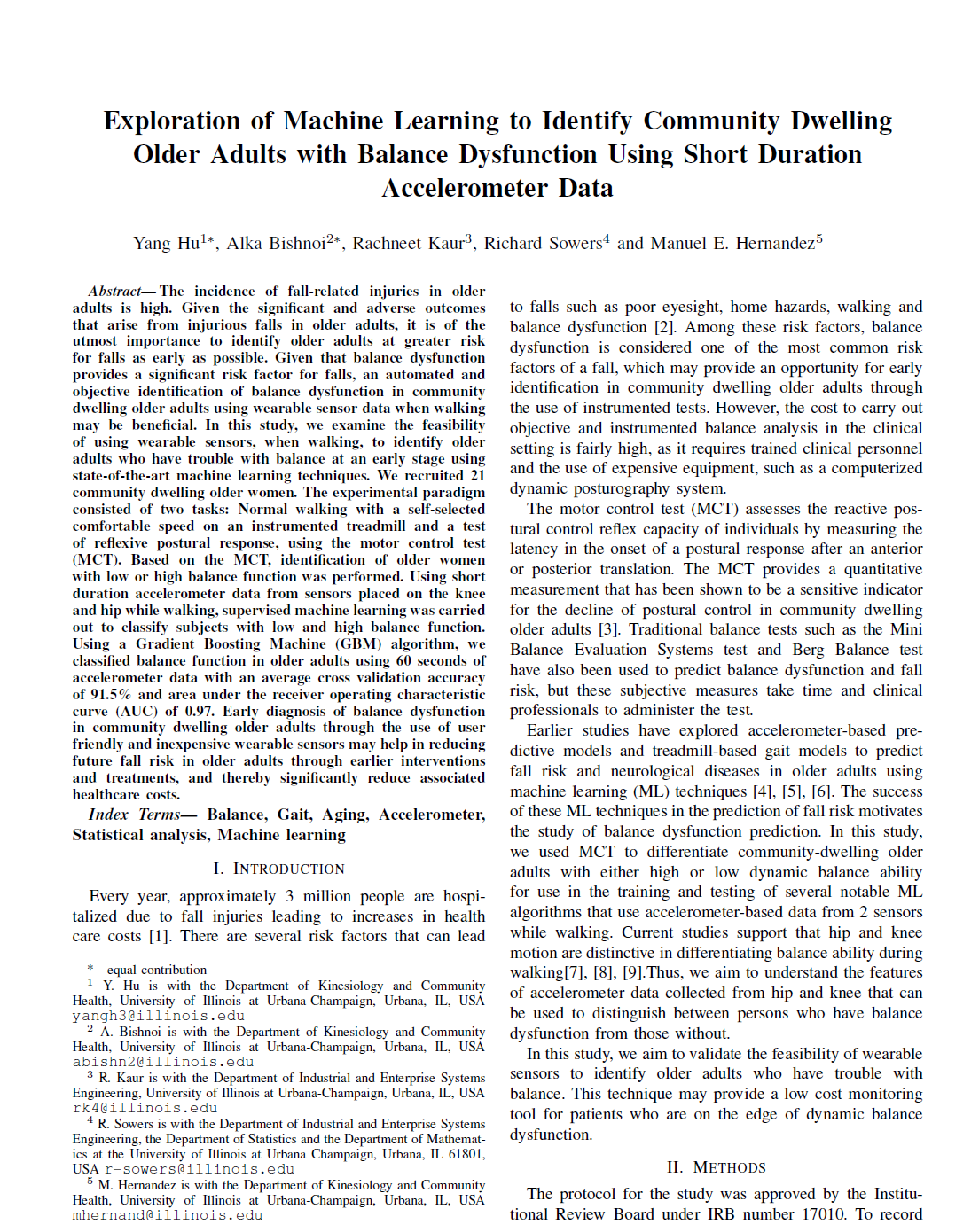Figure: Filtered acceleration coordinates. Comparing 10 seconds of x, y, z-acceleration coordinates from the two accelerometers at hip (H) and knee (K) for a subject with low (A) and high (B) balance.
| Rachneet Kaur, Manuel Hernandez, Richard Sowers |
|
University of Illinois at Urbana-Champaign
Virtual Reality: Recent Advancements, Applications and Challenges, River Publishers, 2020 |
|
|
|
Book Abstract |
| Although the emergence of virtual reality (VR) goes back to the 1960s, with the recent availability of low-cost and high-accuracy systems it has become increasingly prevalent in a wide variety of areas; with uses ranging from training and education to rehabilitation and entertainment. Nowadays, there are many companies that have their own VR systems with various types of headsets and controllers. This has shaped how VR is being used today and how we interact with the latest generation VR systems. With the rapidly evolving dynamics gained through technological advancements, VR is projected to grow and transform the way humans do everyday tasks both in the workplace and in personal lives. In addition to the VR headsets, there are now augmented reality (AR) headsets that allow the user to see their real-world surroundings while also viewing computer generated imagery. This leads to an enhanced user experience. This book aims to provide a comprehensive update of the latest scientific research, mainly in VR and partly in AR, from the last five years. The content is themed around the application areas of training, education, robotics, health and well-being, and user experience. |
|
Figure: Filtered acceleration coordinates. Comparing 10 seconds of x, y, z-acceleration coordinates from the two accelerometers at hip (H) and knee (K) for a subject with low (A) and high (B) balance.
|
References |
| (1) Yang Hu*, Alka Bishnoi*, Rachneet Kaur, Richard Sowers, Manuel E Hernandez. Exploration of Machine Learning to Identify Community Dwelling Older Adults with Balance Dysfunction Using Short Duration Accelerometer Data. In IEEE EMBC 2020 [Bibtex] |

|
Acknowledgements |
| We would like to thank all of the subjects who participated in this study. We would also like to thank Yanqing Lyu, Nicole Cho and members of the Mobility and Fall Prevention Lab for their contributions to the study, and the Campus Research Board for financial support of this work. RK is thankful to William Chittenden for the William A. Chittenden Award. |
| Website adapted from Jingxiang, Richard and Deepak. |